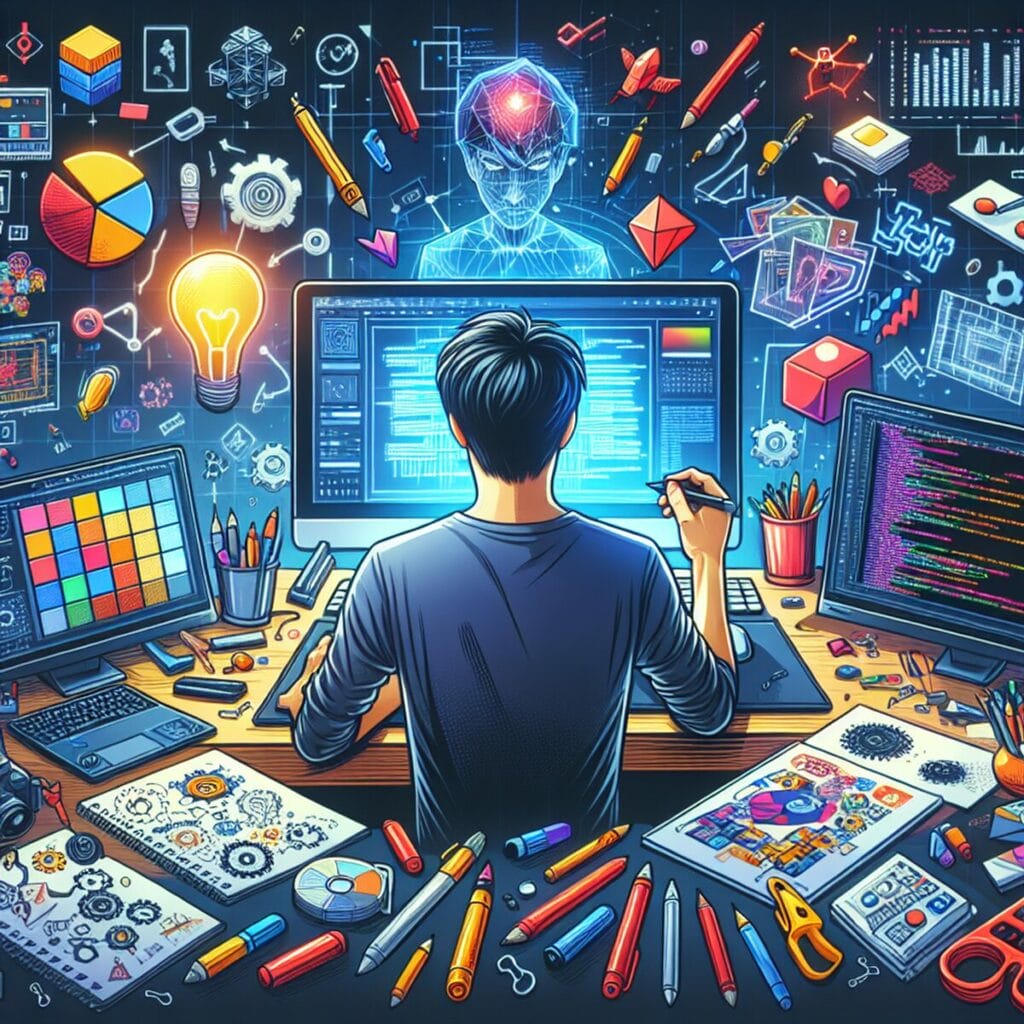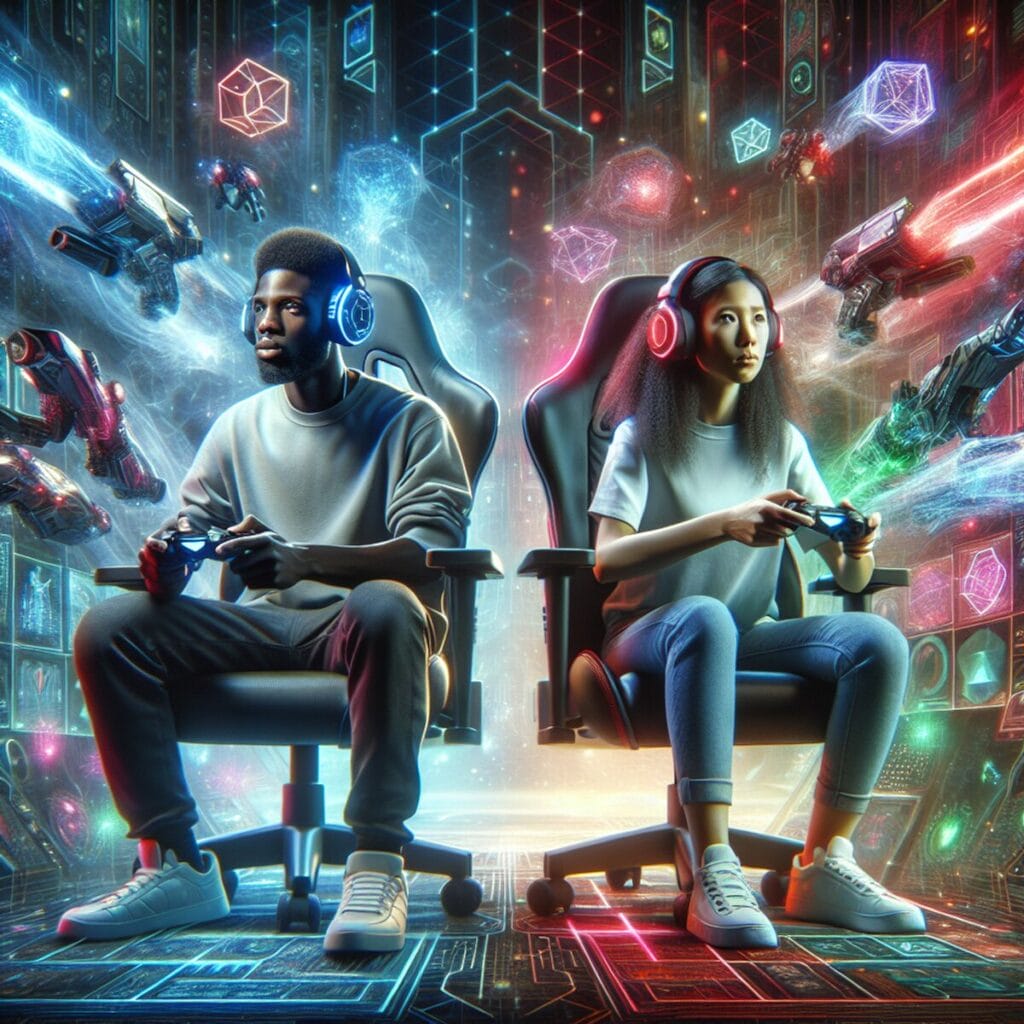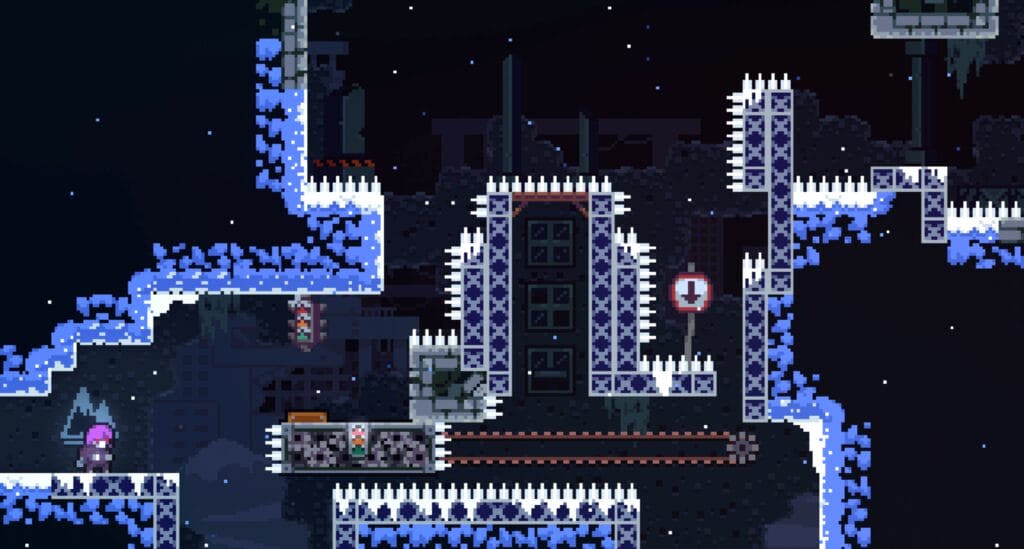Introduction on how to get into game design
Video games have become a ubiquitous form of entertainment, captivating millions of players around the world. Behind these immersive experiences are the creative minds of game designers, who craft intricate worlds, captivating narratives, and engaging gameplay. If you’ve ever dreamed of being part of this dynamic industry, this guide will provide you with valuable insights on how to get into game design and unlock the door to this thrilling creative world.
Have you ever immersed yourself in a captivating video game, marveling at its ability to transport you to fantastical realms? Behind those enchanting worlds lies the art of game design – a craft that harmoniously blends technical prowess with unbounded creativity. If you’re someone who finds joy in both coding and storytelling, embarking on a career in game design could be your calling.
In this comprehensive guide, we’ll unravel the exhilarating path to becoming a game designer with tips on how to get into game development. Get ready to unlock the secrets of crafting unforgettable gaming experiences that leave an indelible mark on players worldwide.
Key Takeaways
- Game design blends technical skills with unbridled creativity to craft enthralling virtual experiences.
- A formal education provides a solid foundation, but passion, hands-on projects, and continuous learning are equally vital.
- Networking, analyzing games, and staying updated on industry trends accelerate your journey into this dynamic field.
- With dedication and an innovative mindset, you can transform your love for gaming into an exhilarating career.
The Journey Begins: Laying the Groundwork

Formal Education: A Solid Foundation
While formal education isn’t an absolute necessity, obtaining a bachelor’s degree in software engineering, computer science, or a related field can provide a robust foundation for your game design pursuits. These programs equip you with essential knowledge in areas like data management, software fundamentals, web development, and user experience design – all invaluable assets for aspiring game creators.
Alternative Pathways: Game Design Bootcamps and Self-Learning
If a traditional four-year degree isn’t your cup of tea, fear not! Game design bootcamps and online courses offer concentrated, accelerated learning opportunities. These programs are tailored to rapidly impart the specific skills and knowledge required for game development, allowing you to dive into the action sooner.
For the self-motivated learners, embarking on a self-directed journey through online resources, tutorials, and open-source projects in video game development is an empowering option. This path demands discipline and perseverance but can be immensely rewarding for those willing to forge their own trails.
Cultivating the Essentials: Key Skills for Game Designers

Successful game designers possess a diverse set of skills that enable them to breathe life into virtual worlds. Here are some of the most critical ones to hone:
Communication and Teamwork: Bridging Disciplines
Game development is a collaborative endeavor, involving programmers, artists, writers, and various other creative minds. As a game designer, effective communication and teamwork skills are paramount to ensuring seamless integration of these disciplines. You’ll need to articulate your visions clearly, negotiate ideas, and foster a cohesive team dynamic to succeed in video game development.
Passion and Knowledge: Fueling Creativity
A deep, unwavering passion for games is the lifeblood of a game designer’s craft. This innate enthusiasm not only drives your creativity but also motivates you to stay abreast of the latest gaming trends, mechanics, and technologies. Immersing yourself in diverse genres and critically analyzing acclaimed titles can greatly enhance your understanding of what captivates players.
Programming Prowess: Bringing Ideas to Life
While you don’t need to be a coding virtuoso, a solid grasp of programming languages like Lua, Python, C#, and C++ can be invaluable. These skills allow you to implement game mechanics, interactions, and key features, translating your imaginative concepts into tangible realities.
Creativity and Artistic Vision: Crafting Immersive Worlds
At its core, game design is an art form. Cultivating your creativity and artistic vision is crucial for conceptualizing unique game elements, crafting engaging narratives, and designing immersive virtual environments that captivate players. Drawing inspiration from various mediums, such as literature, film, and art, can broaden your creative horizons.
Time Management: Juggling Multiple Priorities
Game development projects are often complex and time-sensitive, with numerous moving parts and interdependent tasks. Effective time management skills are essential to ensure you meet deadlines, prioritize tasks, and maintain a healthy work-life balance amidst the creative chaos of video game development.
Gaining Real-World Experience: A Hands-On Approach

While theoretical knowledge is invaluable, nothing can replace the wisdom gained through practical experience. Here are some strategies to gain hands-on exposure to game design:
Internships and Entry-Level Positions
Seek out internship opportunities or entry-level positions within the gaming industry. These roles not only provide you with invaluable on-the-job training but also offer insights into the dynamics of game development teams and the various stages of the production process.
Personal Projects and Portfolio Building
Don’t underestimate the power of personal projects! Creating your own games, no matter how modest, is an excellent way to apply your skills, experiment with new techniques, and build a compelling portfolio. Documenting your design process, challenges faced, and solutions implemented can further showcase your problem-solving abilities to potential employers.
Game Jams and Hackathons
Participating in game jams and hackathons is an exhilarating way to hone your skills under time constraints while collaborating with like-minded individuals. These intense, focused events not only foster creativity but also provide opportunities to network and receive valuable feedback from industry professionals in video game development.
Networking and Continuous Learning: Staying Ahead of the Curve

The gaming industry is ever-evolving, with new technologies, trends, and best practices constantly emerging. To thrive in this dynamic landscape, networking and continuous learning are imperative.
Engaging with the Gaming Community
Immerse yourself in the vibrant gaming community by participating in online forums, social media groups, and local meetups to discuss video game development. This allows you to exchange ideas, seek advice, and stay updated on the latest industry developments in video game development. Attending game development conferences and events can also open doors to valuable networking opportunities and collaborations.
Exploring Emerging Trends and Technologies
Virtual reality, augmented reality, and cloud gaming are just a few of the cutting-edge technologies reshaping the gaming landscape. Staying abreast of these advancements and exploring their potential applications can position you as an innovative, forward-thinking game designer.
Continuous Skill Development
The thirst for knowledge should never be quenched. Embrace a growth mindset and continuously seek opportunities to expand your skillset. Whether it’s mastering new programming languages, exploring game engine features, or delving into storytelling techniques, ongoing skill development will keep you at the forefront of the game design industry.
Case Study: Indie Game Developer Spotlight
Meet Sarah, an indie game developer who turned her passion for gaming into a thriving career. After completing a game design bootcamp, Sarah embarked on creating her own indie title, a quirky puzzle-adventure game called “Whimsical Wonders.”
Through relentless dedication and a keen eye for detail, Sarah crafted a captivating narrative, intuitive gameplay mechanics, and a visually stunning world that resonated with players worldwide. Her success caught the attention of a prominent game studio, leading to a job offer as a junior game designer.
Today, Sarah collaborates with cross-functional teams, contributing her unique perspectives and artistic flair to AAA game projects. She attributes her achievements to her unwavering passion, continuous learning, and the invaluable mentorship she received from industry veterans.
Conclusion: Embracing the Limitless Possibilities

The path to becoming a game designer is a thrilling journey that intertwines technical expertise with boundless creativity. Whether you pursue a formal education or take the self-directed route, the key lies in developing a diverse skill set, cultivating passion, and continuously honing your craft in video game development.
Remember, game design is not just a profession – it’s an art form that allows you to shape immersive virtual experiences in video game development that captivate and inspire players across the globe. Embrace the challenges, celebrate your unique artistic vision, and let your love for gaming propel you forward.
With dedication, perseverance, and an open mind, the world of game design awaits, brimming with limitless possibilities for you to leave an indelible mark on the gaming industry and the lives of players everywhere.
Additional Resources:
Embarking on Your Game Design Adventure
Now that you understand the essentials of becoming a game designer, it’s time to embark on your own adventure. Whichever path you choose – be it pursuing a formal degree, diving into bootcamps, or embarking on a self-guided journey – the key is to approach it with unwavering dedication and a growth mindset.
As you navigate this exhilarating terrain, remember to embrace the challenges that come your way. Overcoming obstacles and learning from setbacks will not only strengthen your resilience but also deepen your understanding of the game design process.
The Power of Mentorship
One invaluable resource that can greatly accelerate your progress is seeking out mentorship from professionals in video game development. Connect with experienced game designers, whether through professional networks, local communities, or online platforms. Learn from their wisdom, gain insights into industry best practices, and benefit from their guidance as you navigate the nuances of this multifaceted field.
Fostering Collaboration and Teamwork
Game design is a collaborative art, and the ability to work effectively within a team is paramount. Seek out opportunities to collaborate with others, whether through group projects, game jams, or by joining local game development communities to kickstart your game design career. These experiences will not only enhance your teamwork skills but also expose you to diverse perspectives and approaches, ultimately enriching your own design sensibilities.
Embracing Failure and Iteration
In the world of game design, failure is not a setback but an opportunity for growth. Embrace setbacks and critiques as valuable learning experiences, and cultivate the ability to iterate and refine your designs based on feedback. Every stumble is a chance to hone your skills, refine your approach, and ultimately create more compelling gaming experiences.
Celebrating Diversity and Inclusivity
The gaming industry has historically faced challenges with diversity and inclusivity. As a game designer, strive to be an agent of positive change by championing diverse perspectives and fostering an inclusive environment. Seek out underrepresented voices, celebrate different cultures and experiences, and use your creativity to craft games that resonate with a wide range of players, thereby contributing to a diverse game design career.
Maintaining a Healthy Work-Life Balance
While passion and dedication are essential in a game design career, it’s equally important to maintain a healthy work-life balance. Game design can be an intense and demanding field, with tight deadlines and high-pressure situations. Prioritize self-care, seek support when needed, and find healthy outlets to recharge your creative batteries. A well-rounded lifestyle will not only promote your overall well-being but also fuel your creativity and productivity in the long run.
The Future of Game Design: Limitless Possibilities
As technology continues to evolve at a breakneck pace, the future of game design promises to be an exhilarating frontier. Emerging technologies such as virtual reality, augmented reality, and cloud gaming are poised to revolutionize the way we experience and interact with games.
Stay curious, embrace innovation, and be prepared to adapt to these ever-changing landscapes. The game designers of tomorrow will be at the forefront of shaping these immersive experiences, pushing the boundaries of what’s possible and captivating audiences in ways we can scarcely imagine today.
Remember, the journey to becoming a game designer is not a sprint but a marathon – a lifelong pursuit of creativity, learning, and growth in your game design career. Embrace the challenges, celebrate your unique artistic vision, and let your passion for gaming propel you forward into a future brimming with limitless possibilities.
Frequently Asked Questions (FAQ) How to get into game design:
What is game design and how do I get into it?
A: Game design involves creating the content and rules of a video game as part of video game development. To get into game design, you can start by learning about game development, exploring different game engines, building technical skills, and possibly pursuing a college degree in a related field.
What are the steps to becoming a video game designer?
A: To become a video game designer, you should familiarize yourself with the gaming industry, learn video game design concepts, acquire the necessary technical skills, and start building a portfolio of game projects to showcase your abilities.
What career paths are available in video game design?
A: In video game design, you can pursue various career paths such as game designer, game developer, game programmer, game artist, game tester, or even a game producer or project manager.
Do I need a college degree to work in video game design?
A: While a college degree in a related field such as game design, computer science, or software development can be beneficial, it is possible to enter the field through self-learning, building a strong portfolio, and gaining relevant experience.
How can I land a job in the video game industry?
A: To land a job in the video game industry, you can start by networking with professionals in the field, attending gaming events and conferences, applying for internships or entry-level positions, and continuously improving your skills and knowledge.
What technical skills do video game designers need?
A: Video game designers need technical skills such as proficiency in programming languages, understanding of game engines, knowledge of game design principles, creativity, problem-solving abilities, and a passion for playing and creating video games.
How do I get hired as a game developer?
A: To get hired as a game developer, you should have a strong portfolio showcasing your game projects, relevant technical skills, a good understanding of the game development process, and the ability to work well in a team environment.


















